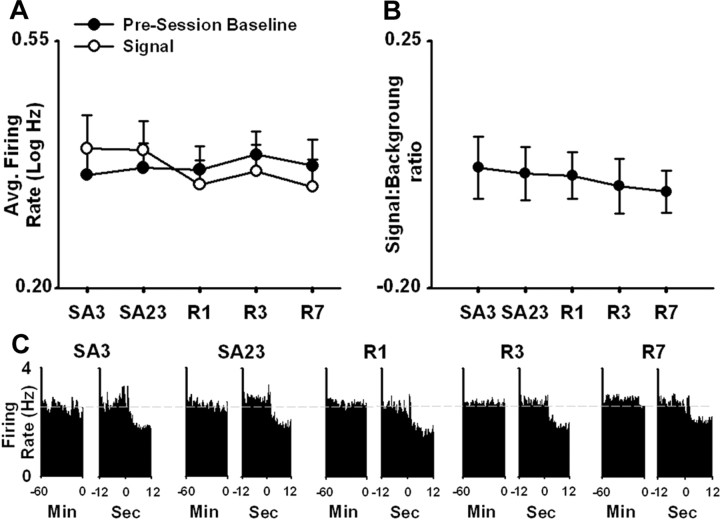Figure 9.
No significant net increase in firing time-locked to the sucrose-reinforced lever press. A, Average signal and background (i.e., presession baseline) firing rates [i.e., average log10(x + 1)] of all recorded neurons are plotted as a function of recording day (i.e., SA3 and SA23 of initial SA, and R1, R3, and R7 of reexposure). B, Average signal:background ratio is plotted as a function of recording day (i.e., SA3 and SA23 of initial SA, and R1, R3, and R7 of reexposure). C, Average baseline and SA firing rates (i.e., hertz per 0.1 s bin) of all recorded neurons are plotted as a function of recording day (i.e., SA3 and SA23 of initial SA, and R1, R3, and R7 of reexposure). For each recording day, two average perievent histograms are shown: one displays average firing rate (i.e., average hertz per 0.1 s bin) during the 60 min presession baseline period (left histogram of the pair), and the other displays average firing rate (i.e., hertz per 0.1 s bin) during the 12 s before and after the sucrose-reinforced lever press. Error bars indicate SEM.

